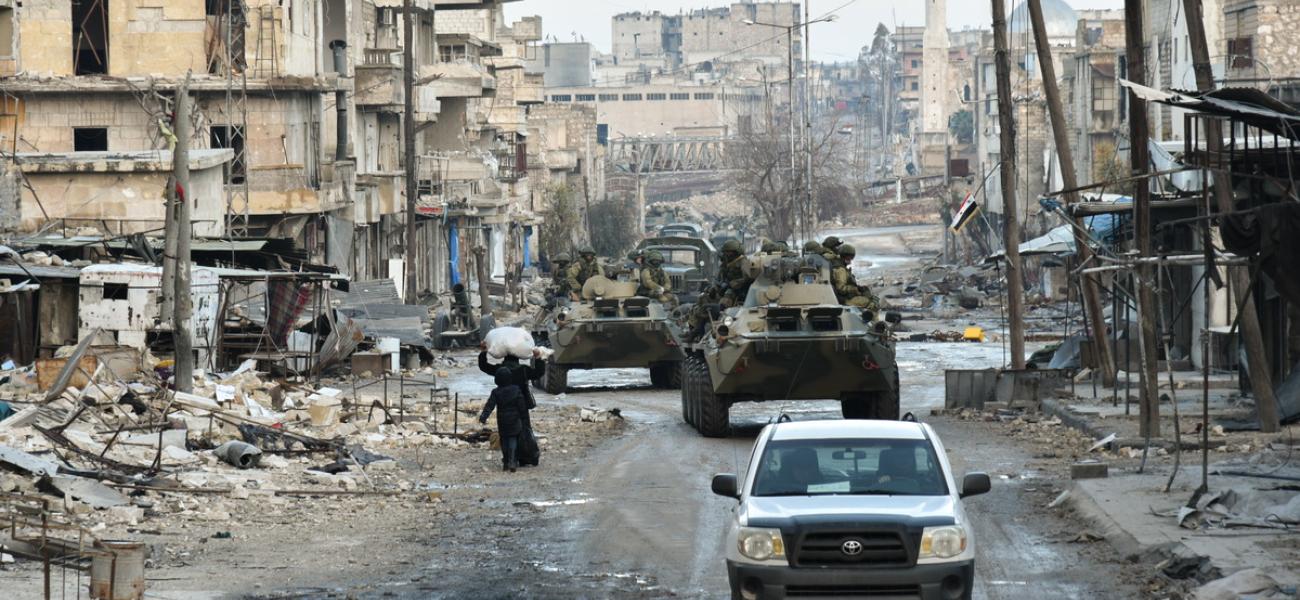
Latest US-Russian Effort on Syria: Good for Preventing Accidents, So-So for Everything Else
The one concrete result to emerge from presidents Donald Trump and Vladimir Putin’s informal meetings on the sidelines of the APEC summit in Vietnam has been the Nov. 11 U.S.-Russia Joint Statement on Syria. This latest bilateral diplomatic effort has elicited some official optimism, but what does it amount to really? Does it represent a promising step forward to end the strife in that war-torn land and “save tremendous numbers of lives,” as Trump indicated in his comments to reporters on Air Force One (and via his Twitter feed)? Does the statement provide a workable roadmap for effective American-Russian collaboration and coordination? Is it, as Putin's spokesman characterized it, so clear in its language that it "does not require comments" and is not open to multiple interpretations? And is this latest addition to a long list of statements, protocols and announcements that have been hailed as groundbreaking efforts to end the fighting in Syria really going to make the difference this time around?
The statement builds on previous modest steps that Russia and the United States have achieved: the use of de-escalation zones and limited cease-fires to tap down fighting; the continuation of the all-important de-confliction efforts to ensure that U.S.- and Russian-backed forces don’t engage in direct clashes or, if an incident occurs, it can be quickly addressed to prevent unintended and unwelcome consequences; building on efforts undertaken with Jordan to stabilize southern Syria and maintain tenuous truces between pro- and anti-regime forces; and ostensible support for focusing on the complete destruction of the remnants of Islamic State and getting a post-conflict political reconciliation process underway. However, just as with the agreements reached between Russia and the United States over Syria during the last year of the Obama administration, this latest statement, contrary to Peskov's comments, is indeed open to multiple interpretations because both sides continue to use vague language and terms deliberately left undefined to accommodate the still considerable divergences between Washington and Moscow over Syria's future.
Everyone can agree on the necessity of fighting the Islamic State. The problem, of course, is that Moscow has a much broader definition of who constitutes "associates" of IS—to encompass some of the groups that the United States views as legitimate opposition to the regime of Bashar al-Assad. Everyone signs on to the pledge that a post-conflict Syria will need elections—but Russia holds open the possibility that Assad could be re-elected as president of a post-war Syria, while to the United States it is inconceivable that in any free and fair election Assad, with the amount of blood on his hands, could win a majority of the ballots cast. Foreign fighters should leave, everyone concurs, but are the Iranian Al-Quds units of the Revolutionary Guard or Hezbollah combatants permitted to remain at the invitation of the government in Damascus? And the statement never mentions the "Syria National Dialogue Conference" that Moscow hoped to convene later this month in Sochi (now to be postponed until December)—which represents the Kremlin's efforts, along with its partners in the Middle East, to define the "acceptable" members of the Syrian political constellation who could be brought into some sort of power-sharing agreement. At the same time, some of those who would not be invited to Sochi or would not take part are precisely the political forces that the United States would hope would play a leading role in a post-war Syria.
And while Trump may be prepared to accept a coequal role for Russia in charting Syria's future, he has almost no political support for such a position in the United States, either within his own national security establishment or from Congress, including both Republicans and Democrats on the Hill. Assad's departure from power remains a stated U.S. objective, even if the Trump administration is more flexible on how its provisions are implemented than its predecessors in the Obama White House. Limiting or even reversing the growth of Russian influence in the Middle East—and resolutely opposing any sort of "swap" where accommodation for U.S. preferences in Syria is matched by a lessening of U.S. sanctions on Russia over its actions in Ukraine—are still two operative principles guiding the formation of U.S. policy. To be frank, the United States is not going to passively "sign on" to decisions on Syria reached largely by the trilateral Russia-Iran-Turkey dialogue—but Russia, in turn, is not going to yield gains that its air power, along with Iranian ground forces, have won for the Assad regime on the battlefield.
The statement is important because it recognizes the crucial task of preventing any sort of clash between Moscow and Washington in Syria. It sends a clear message to the military establishments of both countries to take the steps necessary to avoid any accidents. But for those who argue that the Da Nang statement heralds an imminent shift in the trajectory of U.S.-Russia relations, I cannot share that optimistic appraisal of the situation.
Nikolas K. Gvosdev
Senior Fellow, Foreign Policy Research Institute; Contributing Editor, The National Interest
Photo credit: Photo from the Russian Defense Ministry's International Mine Action Center in Syria.
The opinions expressed in this commentary are solely those of the author.

